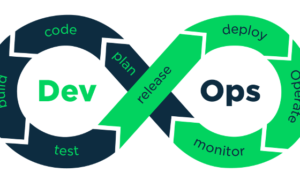Are you an aspiring entrepreneur or inventor with a groundbreaking idea for a new product? Are you ready to take that idea from a mere concept to a tangible reality? Look no further! In this article, we will walk you through the entire process of manufacturing your product, from the initial idea to the final production stage. Whether you have experience in product development or are a complete novice, this article will provide you with valuable insights and practical tips to help you navigate the complex world of manufacturing. We will cover everything from conducting market research and creating prototypes to finding the right manufacturing partner and ensuring quality control. With our step-by-step approach and expert advice, you’ll be well-equipped to turn your vision into a successful product that not only meets market demand but also exceeds customer expectations. So, let’s dive in and unlock the secrets to manufacturing success!
Importance of Product Manufacturing
Product manufacturing is a crucial step in bringing your idea to life and turning it into a profitable business. It involves the transformation of raw materials or components into finished goods that can be sold to customers. Manufacturing allows you to create something tangible from your ideas and enables you to reach a wider audience with your product. Without manufacturing, your concept will remain just that – a concept. By manufacturing your product, you can meet market demand, generate revenue, and build a successful brand.
Steps in the Product Manufacturing Process
The product manufacturing process consists of several key steps that need to be followed to ensure a smooth and successful production cycle. Let’s take a closer look at each of these steps:
Research and Development for Product Manufacturing
Before diving into the manufacturing process, it’s essential to conduct thorough research and development (R&D) to validate your product idea and ensure its feasibility. R&D involves analyzing the market demand for your product, identifying potential competitors, and understanding consumer preferences. This stage also includes designing the basic specifications and functionalities of your product. By conducting comprehensive R&D, you can refine your concept and make informed decisions before moving forward with manufacturing.
Designing and Prototyping Your Product
Once you have completed the initial research and development stage, the next step is to design and create a prototype of your product. The design phase involves creating detailed drawings or 3D models that showcase the aesthetics, dimensions, and functionality of your product. These designs will serve as a blueprint for the manufacturing process. After finalizing the design, you can proceed to build a prototype to test and validate your product’s performance. Prototyping allows you to make necessary modifications and improvements before mass production.
Choosing the Right Materials and Suppliers
Selecting the right materials and suppliers is crucial for manufacturing high-quality products. Conduct thorough research to identify reputable suppliers that can provide you with the materials and components needed for your product. Consider factors such as cost, quality, reliability, and lead times when choosing suppliers. Additionally, ensure that the materials you use are safe, durable, and compliant with any relevant regulations or standards. Collaborating with the right suppliers will contribute to the overall success and quality of your manufactured product.
Setting up a Production Line
Once you have finalized the design, materials, and suppliers, it’s time to set up your production line. This involves determining the production methods, equipment, and facilities required to manufacture your product efficiently. Consider factors such as production capacity, cost-effectiveness, and scalability when designing your production line. It’s important to optimize the manufacturing process to minimize waste, reduce production time, and maximize productivity. Invest in the right machinery and ensure that your production line is well organized and capable of meeting the anticipated demand for your product. You may want to outsource your production if you are unable to do it yourself. If you are creating plastic products, you can enlist the help of a plastic injection molding service to help you create your product.
Quality Control and Testing in Manufacturing
Maintaining consistent quality is essential for the success of your manufactured product. Implementing effective quality control measures throughout the manufacturing process is crucial to ensure that your product meets the required standards and specifications. Conduct regular inspections, tests, and audits to identify any defects or deviations from the desired quality. Implementing a robust quality management system will help you identify and rectify any issues before they reach the hands of the customers. By prioritizing quality control, you can build a reputation for delivering reliable and high-quality products.
Packaging and Labeling Your Product
Packaging plays a significant role in the success of your manufactured product. It not only protects your product during transportation and storage but also serves as a marketing tool to attract customers. Design packaging that is both functional and visually appealing. Consider factors such as durability, eco-friendliness, and ease of use when selecting packaging materials. Additionally, ensure that your product is properly labeled with all the necessary information, such as ingredients, instructions, and safety warnings. Packaging and labeling your product effectively will enhance its marketability and build trust with your customers.
Distribution and Logistics for Manufactured Products
Once your product is manufactured and packaged, it’s time to focus on distribution and logistics. Develop a distribution strategy that aligns with your target market and customer preferences. Consider factors such as transportation, warehousing, and order fulfillment when planning your distribution network. Collaborate with reliable logistics partners to ensure timely and cost-effective delivery of your products. Additionally, consider implementing inventory management systems to track and manage stock levels efficiently. Effective distribution and logistics management will ensure that your products reach customers on time and in optimal condition.
Marketing and Selling Your Manufactured Product
Marketing plays a crucial role in promoting and selling your manufactured product. Develop a comprehensive marketing strategy to create awareness and generate demand for your product. Utilize various marketing channels, such as social media, online advertising, and influencer partnerships, to reach your target audience. Consider conducting market research to identify the most effective marketing tactics for your product. Additionally, develop a sales strategy and train your sales team to effectively communicate the value and benefits of your product to potential customers. By investing in marketing and sales efforts, you can maximize the visibility and sales of your manufactured product.
Scaling up Production and Managing Growth
As demand for your product increases, it may be necessary to scale up production to meet customer needs. Evaluate your production capacity and identify areas where improvements can be made to increase output. Consider factors such as workforce, machinery, and production efficiency when scaling up. Additionally, monitor market trends and customer feedback to identify opportunities for product enhancements or diversification. Be prepared to adapt and expand your manufacturing capabilities to accommodate growth and capitalize on market opportunities.
Common Challenges in Product Manufacturing and How to Overcome Them
The manufacturing process can be complex, and there are several common challenges that entrepreneurs and inventors face. These challenges include cost management, supply chain disruptions, quality control issues, and product scalability. To overcome these challenges, it’s important to conduct thorough research, plan meticulously, and build strong relationships with suppliers and manufacturing partners. Additionally, implementing effective quality control measures, investing in automation and technology, and staying updated with industry trends can help mitigate these challenges and ensure a smooth manufacturing process.
Conclusion
Manufacturing your product is an exciting and challenging journey that requires careful planning, research, and execution. By following the steps outlined in this article, you can navigate the complexities of the manufacturing process with confidence and set yourself up for success. Remember to conduct thorough research, design and prototype your product, choose the right materials and suppliers, optimize your production line, prioritize quality control, package and label your product effectively, plan your distribution strategy, invest in marketing and sales efforts, and be prepared to scale up production as demand grows. Additionally, stay informed about industry trends, overcome challenges with resilience, and continuously seek opportunities for improvement and innovation. With perseverance and dedication, you can turn your idea into a tangible, successful product that makes a lasting impact in the market. So, start your manufacturing journey today and unlock the potential of your vision!





























